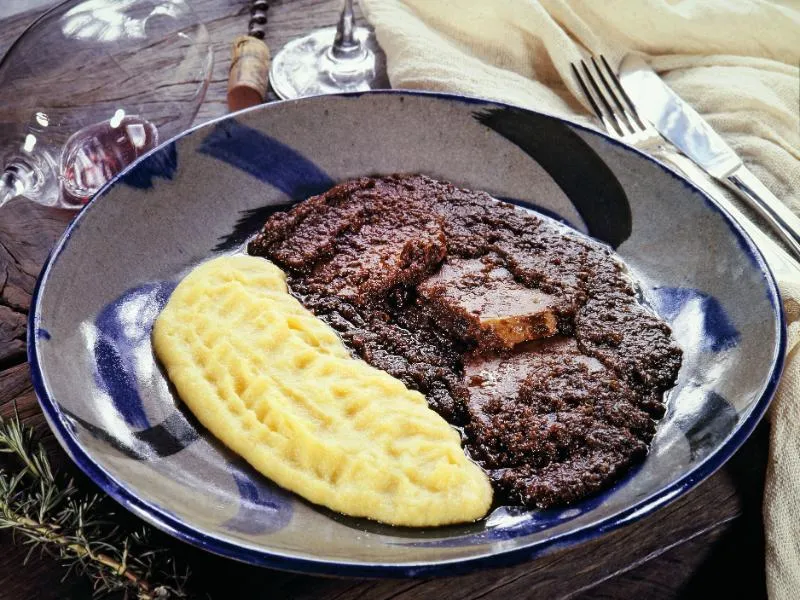Brasato al Barolo
Tender beef chuck slow-braised in prestigious Barolo wine with aromatic vegetables and herbs.
👉 View Authentic Recipe 👈
About This Dish
Brasato al Barolo is a luxurious braised beef dish from Italy’s Piedmont region, where the prestigious Barolo wine is produced. This dish exemplifies the region’s dedication to transforming humble ingredients into extraordinary meals through patient, slow cooking methods. The marriage between the tough beef cut and the complex, tannic Barolo wine creates a dish of remarkable depth and elegance.
The preparation involves marinating beef (traditionally a tough cut like chuck or beef cheek) overnight in Barolo wine with aromatics before slowly braising it for several hours. This long, gentle cooking process breaks down the tough connective tissues in the meat while the wine’s tannins and flavors infuse deeply into the beef, creating fork-tender meat in a richly reduced sauce.
In Piedmont, Brasato al Barolo often appears on holiday tables and during the autumn and winter months when hearty, warming dishes are most appreciated. It’s typically served with polenta or mashed potatoes to soak up the luxurious wine-infused sauce, making it a centerpiece for Sunday family gatherings and special occasions throughout the northwestern Italian region.
🧑🍳 Analyzed by CucinaBot
Why This Dish Works
The magic of Brasato al Barolo lies in its perfect application of slow, moist-heat cooking techniques. The collagen in tough beef cuts converts to gelatin during long, slow cooking, creating tenderness and a silky mouthfeel. Meanwhile, the tannins in Barolo wine break down and interact with the meat proteins through both the marination and braising processes, tenderizing the meat while contributing complexity. The aromatic vegetables release their water-soluble flavor compounds into the cooking liquid, creating a sauce with remarkable depth and umami characteristics.
Key Success Factors
- Proper Marination: Allowing the beef to marinate overnight in wine is crucial for flavor development and initial tenderization
- Searing Technique: A thorough browning of the meat before braising creates foundational flavor through the Maillard reaction
- Cooking Temperature: Maintaining a very low simmer (never boiling) prevents the meat from toughening
- Patience: The dish requires at least 3-4 hours of braising for the proper transformation of textures and flavors
Common Pitfalls
Many modern recipes substitute less expensive wines for Barolo, dramatically altering the dish’s intended flavor profile. While using a full bottle of Barolo represents a significant investment, the wine’s unique characteristics of tar, roses, and subtle notes of cherry and truffles cannot be replicated with simpler wines. Another common mistake is rushing the cooking process or using high heat, which prevents the proper breakdown of collagen and can result in tough, chewy meat despite hours of cooking.
How to Judge Authenticity
When reviewing recipes, look for these markers of authenticity:
- Uses genuine Barolo wine (not just “red wine” or other substitutes)
- Includes an overnight marination step
- Specifies a tough cut of beef like chuck or beef cheek
- Maintains a very low cooking temperature throughout the braising process
- Contains minimal ingredients beyond the core aromatics (carrot, celery, onion) and herbs